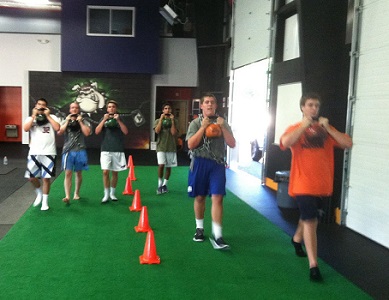How You Can Prepare Your HS Athletes for College
 Do you have athletes that dream of playing in college?
Do you have athletes that dream of playing in college?
As performance coaches, you have the opportunity to play a large role in the success of athletes making that “jump” to the next level.
We know that there are many coaches that do this really really well, and one of them is Coach Jim Kielbaso. He is our resident expert on, well – just about everything 🙂
We knew that it was time to sit down with him and talk shop, and you can see the entire video in our Exclusive Insiders All-Access Membership. We spoke about exactly what athletes need from their performance coaches to be prepared to play at that next level.
Usually we keep this pretty exclusive, but some things are just too good not to share with everyone! There are many things that can be done to help make the transition from HS to College Sports a little bit “easier”. Here are 4 from the exclusive video.
Four Ways to Make the Transition from HS to College Sports
#1: Identify goals early on
Try to decipher what your athlete ultimately is striving for. Do they want to play at the next level? Are they committed to the challenges?
#2: Network with college coaches
If an athlete identifies that they want to play at the next level, then it’s time to start networking. Speak with collegiate coaches (ideally at the school where the athlete has applied/is accepted) and start understanding what is “next” for your athlete.
#3: Get your athletes in REALLY good shape
Let’s face it, this is completely your wheelhouse! The best thing you can do for an athlete that wants to take their game to the next level is get them physically ready. The Long Term Athletic Development Model is the best way to get them prepared to perform.
#4: Teach good technique
This goes right along with getting them in “REALLY good shape”. They must be able to perform the fundamentals really really well. Again, it is about the long-term approach.
Realizing that you don’t always have the luxury of training a kid for many years before college, it’s your job to make sure the technique is mastered before moving on to “bigger and better”.
Want access to the entire video—–>Become an IYCA Insiders Member for $1 today.
Want to Learn More About Preparing Athletes for the World of College Sports?
Come see our exclusive content for $1, plus get exclusive bonuses that will catapult your training.











